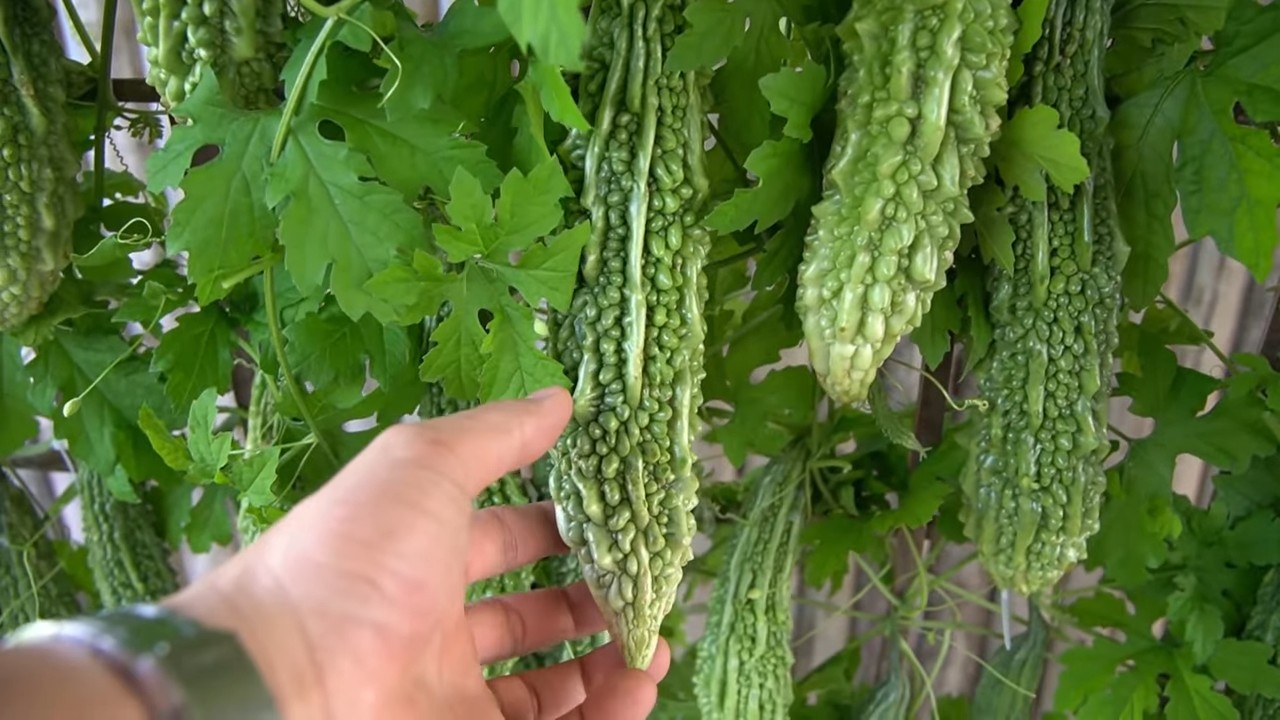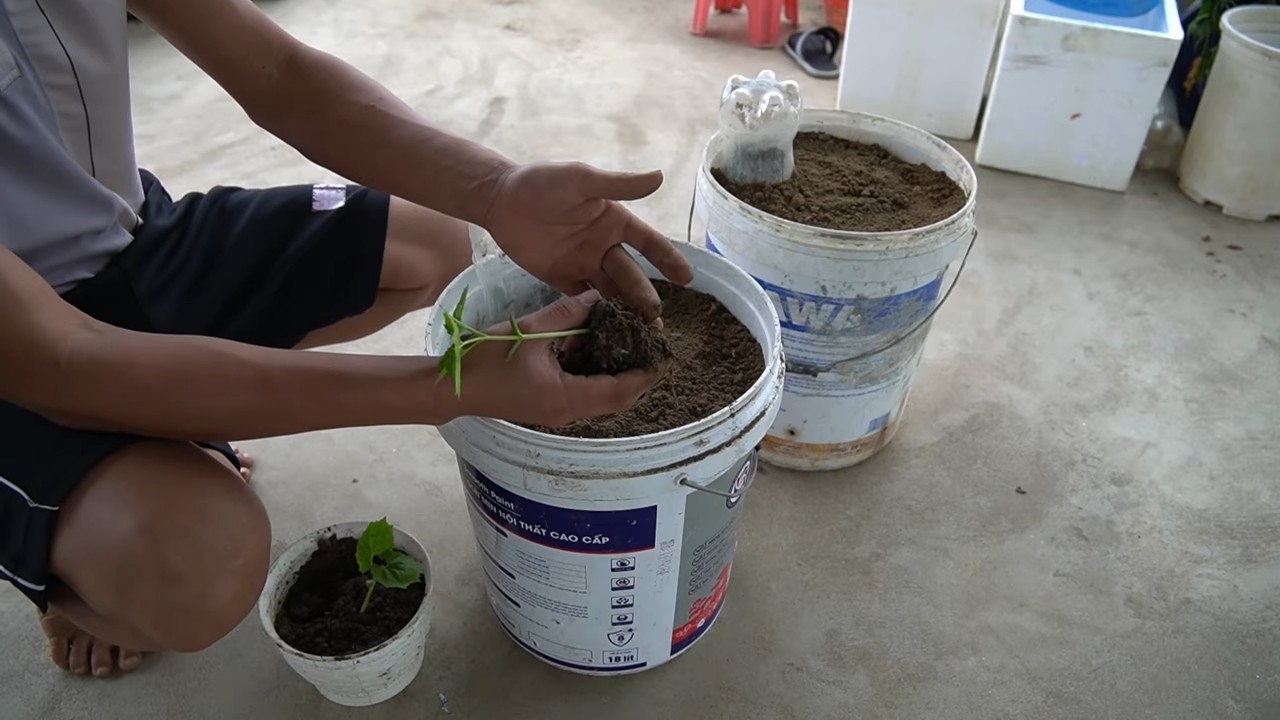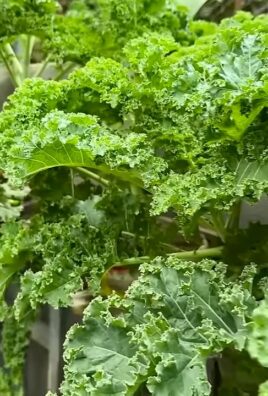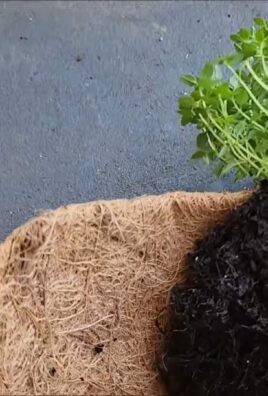Bitter Melon Growing Tips: Ever dreamt of harvesting your own vibrant, knobbly bitter melons right from your backyard? I know I have! There’s something incredibly satisfying about nurturing a plant from seed to table, especially when it yields such a unique and nutritious fruit. But let’s be honest, growing bitter melon can sometimes feel like a bittersweet challenge, right?
For centuries, bitter melon, also known as karela, has been a staple in Asian and African cuisines and traditional medicine. Its distinctive bitter flavor is an acquired taste, but its health benefits are undeniable. From regulating blood sugar to boosting immunity, this humble fruit packs a powerful punch. But getting those melons to thrive in your home garden? That’s where these DIY tricks come in!
Many gardeners struggle with getting their bitter melon plants to produce abundant, healthy fruit. Issues like poor pollination, pest infestations, and improper soil conditions can all hinder your harvest. That’s why I’ve compiled this comprehensive guide filled with easy-to-follow bitter melon growing tips and DIY hacks that will transform your gardening game. I’m going to share my secrets to help you overcome these common hurdles and enjoy a bountiful harvest of this amazing fruit. Get ready to roll up your sleeves and unlock the secrets to successful bitter melon cultivation!

Growing Bitter Melon Like a Pro: My DIY Guide to a Bountiful Harvest
Okay, so you want to grow bitter melon? Awesome! It’s a unique and rewarding plant to cultivate, even though it can be a little finicky. I’ve been growing it for a few years now, and I’ve learned a thing or two along the way. This guide is packed with everything I know, from seed starting to harvesting, so you can enjoy your own homegrown bitter melon. Let’s get started!
Understanding Bitter Melon’s Needs
Before we dive into the nitty-gritty, let’s talk about what bitter melon needs to thrive. This will help you understand why we’re doing things a certain way.
* Sunlight: Bitter melon is a sun-lover! It needs at least 6-8 hours of direct sunlight each day. The more, the better, honestly.
* Warmth: This is a tropical plant, so it hates the cold. Don’t even think about planting it until the soil is consistently warm, ideally above 65°F (18°C).
* Well-draining soil: Bitter melon doesn’t like soggy feet. Make sure your soil drains well to prevent root rot.
* Support: This is a vine, so it needs something to climb on. A trellis, fence, or even a sturdy tomato cage will work.
* Consistent watering: Keep the soil consistently moist, but not waterlogged.
* Fertilizer: Bitter melon is a heavy feeder, so regular fertilization is important for a good harvest.
Section 1: Starting Your Bitter Melon Seeds
Starting seeds indoors gives you a head start, especially if you live in a cooler climate. Here’s how I do it:
1. Soaking the Seeds: Bitter melon seeds have a tough outer shell, so soaking them helps with germination.
* I usually soak them in warm water for 24-48 hours. You’ll notice they swell up a bit. This is a good sign!
* Change the water every 12 hours to keep it fresh.
2. Scarifying the Seeds (Optional but Recommended): This step helps the seed sprout faster.
* Gently rub the seed with sandpaper or nick it with a knife. Be careful not to damage the inside of the seed!
* The goal is to weaken the outer shell, making it easier for the seedling to emerge.
3. Planting the Seeds:
* Fill small pots (2-3 inches in diameter) with a good quality seed-starting mix.
* Make a small hole about ½ inch deep.
* Place one seed in each hole and cover it gently with soil.
* Water the soil thoroughly, but gently, so you don’t dislodge the seeds.
4. Creating a Warm and Humid Environment:
* Cover the pots with plastic wrap or a humidity dome to create a greenhouse effect.
* Place the pots in a warm location, ideally around 75-85°F (24-29°C). A heat mat can be really helpful here.
* Check the soil moisture daily and water as needed to keep it consistently moist.
5. Waiting for Germination:
* Bitter melon seeds can take anywhere from 7 to 21 days to germinate, so be patient.
* Once the seedlings emerge, remove the plastic wrap or humidity dome.
* Move the seedlings to a sunny location or under grow lights.
6. Caring for the Seedlings:
* Water the seedlings regularly, allowing the soil to dry out slightly between waterings.
* Fertilize them with a diluted liquid fertilizer every 2 weeks.
* Once the seedlings have a few sets of true leaves, they’re ready to be transplanted outdoors.
Section 2: Preparing Your Garden Bed
Proper soil preparation is crucial for a successful bitter melon harvest. Here’s what I do to get my garden bed ready:
1. Choosing the Right Location:
* Select a spot that gets at least 6-8 hours of direct sunlight each day.
* Make sure the soil drains well. If you have heavy clay soil, amend it with compost and other organic matter.
* Consider the location of your trellis or support structure.
2. Preparing the Soil:
* Clear the area of any weeds, rocks, or debris.
* Dig a hole that is at least 12 inches deep and wide.
* Amend the soil with plenty of compost, well-rotted manure, or other organic matter. This will improve drainage, fertility, and water retention.
* I also like to add a slow-release fertilizer to the soil at this stage.
3. Setting Up Your Support Structure:
* Install your trellis, fence, or tomato cage before you transplant the seedlings.
* Make sure the support structure is sturdy enough to support the weight of the mature vines and fruits.
* I prefer using a trellis made of sturdy wire mesh.
Section 3: Transplanting Your Seedlings
Now comes the exciting part – getting those seedlings into the ground!
1. Hardening Off the Seedlings:
* Before transplanting, you need to “harden off” the seedlings. This means gradually exposing them to outdoor conditions.
* Start by placing the seedlings outdoors in a sheltered location for a few hours each day.
* Gradually increase the amount of time they spend outdoors over the course of a week.
* This will help them adjust to the sun, wind, and temperature changes.
2. Transplanting:
* Choose a cloudy day or transplant in the late afternoon to minimize stress on the seedlings.
* Gently remove the seedlings from their pots, being careful not to damage the roots.
* Plant the seedlings at the same depth they were growing in the pots.
* Space the seedlings about 2-3 feet apart.
* Water the seedlings thoroughly after transplanting.
3. Mulching:
* Apply a layer of mulch around the base of the plants to help retain moisture, suppress weeds, and regulate soil temperature.
* I like to use straw, wood chips, or shredded leaves.
Section 4: Caring for Your Bitter Melon Plants
Once your plants are in the ground, it’s time to provide them with the care they need to thrive.
1. Watering:
* Water the plants regularly, especially during hot, dry weather.
* Aim to keep the soil consistently moist, but not waterlogged.
* Water deeply and less frequently, rather than shallowly and more often.
* I usually water in the morning to allow the foliage to dry before nightfall, which helps prevent fungal diseases.
2. Fertilizing:
* Bitter melon is a heavy feeder, so regular fertilization is important.
* Fertilize every 2-3 weeks with a balanced liquid fertilizer or a fertilizer specifically formulated for vegetables.
* Follow the instructions on the fertilizer label.
* You can also side-dress the plants with compost or well-rotted manure.
3. Pruning:
* Pruning can help improve air circulation and encourage fruit production.
* Remove any yellowing or dead leaves.
* You can also prune back the vines to encourage branching.
* I usually prune the lower leaves to prevent them from touching the soil, which can help prevent fungal diseases.
4. Training the Vines:
* As the vines grow, train them to climb up the trellis or support structure.
* Use plant ties or twine to secure the vines to the support.
* Regularly check the vines and adjust the ties as needed.
5. Pest and Disease Control:
* Keep an eye out for pests and diseases. Common pests include aphids, spider mites, and squash bugs.
* Common diseases include powdery mildew and fungal leaf spots.
* If you spot any pests or diseases, take action immediately.
* I prefer using organic pest control methods, such as insecticidal soap or neem oil.
* For fungal diseases, I use a copper fungicide.
* Good air circulation and proper watering practices can also help prevent diseases.
Section 5: Pollination
Bitter melon has separate male and female flowers on the same plant. Sometimes, pollination can be an issue, especially if you don’t have many pollinators in your garden.
1. Identifying Male and Female Flowers:
* Male flowers have a long, thin stem.
* Female flowers have a small, immature fruit at the base of the flower.
2. Hand-Pollination (If Necessary):
*

Conclusion
So, there you have it! Mastering the art of growing bitter melon doesn’t have to be a daunting task. By implementing these simple yet effective DIY tricks, you can transform your garden into a thriving haven for this unique and nutritious vegetable. We’ve explored everything from optimizing soil conditions and crafting the perfect trellis system to warding off pests with natural solutions and ensuring consistent watering. These techniques are not just about growing bitter melon; they’re about cultivating a deeper connection with your garden and understanding the needs of your plants.
The beauty of these DIY methods lies in their adaptability. Feel free to experiment with different variations to suit your specific climate and garden conditions. For instance, if you live in a particularly humid area, consider increasing the spacing between your plants to improve air circulation and prevent fungal diseases. If you’re short on space, vertical gardening techniques, like using repurposed pallets or hanging planters, can be a game-changer. You could even try different types of trellises – a simple bamboo structure, a repurposed metal gate, or even a sturdy tomato cage can all work wonders.
Don’t be afraid to get creative with your pest control methods, too. Instead of relying solely on neem oil, try companion planting with herbs like basil or marigolds, which naturally repel many common garden pests. You can also create your own organic pesticide spray using a mixture of garlic, chili peppers, and water. The possibilities are endless!
Remember, growing bitter melon is a journey, not a destination. There will be challenges along the way, but with patience, persistence, and a willingness to learn, you’ll be rewarded with a bountiful harvest of fresh, homegrown bitter melon. The satisfaction of harvesting your own vegetables, knowing that you nurtured them from seed to table, is truly unparalleled.
We strongly encourage you to give these DIY bitter melon growing tips a try. Whether you’re a seasoned gardener or a complete beginner, these techniques are designed to be accessible and easy to implement. And most importantly, don’t forget to share your experiences with us! We’d love to hear about your successes, your challenges, and any unique variations you’ve discovered along the way. Share your photos, your tips, and your stories in the comments section below. Let’s create a community of bitter melon enthusiasts, sharing our knowledge and inspiring each other to grow the best bitter melon possible. Happy gardening!
Frequently Asked Questions (FAQ)
What is the best time of year to plant bitter melon?
Bitter melon thrives in warm weather, so the best time to plant it is in late spring or early summer, after the last frost has passed. The soil temperature should be at least 65°F (18°C) for optimal germination. If you live in a region with a short growing season, you can start the seeds indoors 4-6 weeks before the last expected frost. This will give your plants a head start and ensure a longer harvest period.
How much sunlight does bitter melon need?
Bitter melon requires at least 6-8 hours of direct sunlight per day to grow and produce fruit. Choose a planting location that receives plenty of sunlight throughout the day. If you’re growing bitter melon indoors, supplement with grow lights to ensure adequate light exposure. Insufficient sunlight can lead to stunted growth, reduced fruit production, and pale, weak plants.
What type of soil is best for growing bitter melon?
Bitter melon prefers well-drained, fertile soil that is rich in organic matter. Amend your soil with compost, aged manure, or other organic amendments before planting to improve its fertility and drainage. The ideal soil pH for bitter melon is between 6.0 and 7.0. You can test your soil pH using a soil testing kit and adjust it accordingly with lime or sulfur.
How often should I water my bitter melon plants?
Water your bitter melon plants regularly, especially during hot, dry weather. Aim to keep the soil consistently moist but not waterlogged. Water deeply at the base of the plants, avoiding wetting the foliage, which can increase the risk of fungal diseases. Mulching around the plants can help to retain moisture in the soil and suppress weed growth. Check the soil moisture regularly by sticking your finger into the soil about an inch deep. If the soil feels dry, it’s time to water.
What are some common pests and diseases that affect bitter melon?
Common pests that affect bitter melon include aphids, spider mites, squash bugs, and cucumber beetles. Diseases include powdery mildew, downy mildew, and fusarium wilt. To prevent pest and disease problems, practice good garden hygiene, such as removing weeds and debris from around the plants. Inspect your plants regularly for signs of pests or diseases and take action promptly. Use organic pest control methods, such as neem oil or insecticidal soap, to control pests. Ensure good air circulation around the plants to prevent fungal diseases.
How do I build a trellis for my bitter melon plants?
Bitter melon vines need a strong trellis to support their growth. You can build a simple trellis using bamboo poles, wooden stakes, or metal fencing. The trellis should be at least 6-8 feet tall and sturdy enough to support the weight of the vines and fruit. Space the supports about 2-3 feet apart and tie the vines to the trellis as they grow. You can also use a wire mesh or netting to create a trellis.
When is the best time to harvest bitter melon?
Harvest bitter melon when the fruits are still green and firm, before they turn yellow or orange. The fruits should be about 6-8 inches long and have a slightly waxy appearance. Use a sharp knife or pruning shears to cut the fruits from the vine, leaving a short stem attached. Harvesting bitter melon regularly will encourage the plant to produce more fruit.
How can I reduce the bitterness of bitter melon?
Bitter melon is known for its bitter taste, but there are several ways to reduce the bitterness. Before cooking, soak the sliced bitter melon in salted water for about 30 minutes. This will help to draw out some of the bitterness. You can also blanch the bitter melon in boiling water for a few minutes before cooking. Another trick is to remove the seeds and pith from the center of the fruit, as these are the most bitter parts.
Can I grow bitter melon in containers?
Yes, you can grow bitter melon in containers, but you’ll need to choose a large container that is at least 12 inches in diameter and depth. Use a well-draining potting mix and provide the plants with a trellis to climb on. Container-grown bitter melon plants may require more frequent watering and fertilization than those grown in the ground.
What are some good companion plants for bitter melon?
Good companion plants for bitter melon include beans, peas, corn, and marigolds. Beans and peas help to fix nitrogen in the soil, which benefits the bitter melon plants. Corn provides a natural trellis for the vines to climb on. Marigolds repel many common garden pests. Avoid planting bitter melon near potatoes or tomatoes, as they can compete for nutrients and water.




Leave a Comment